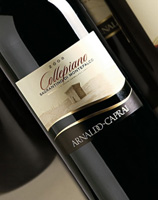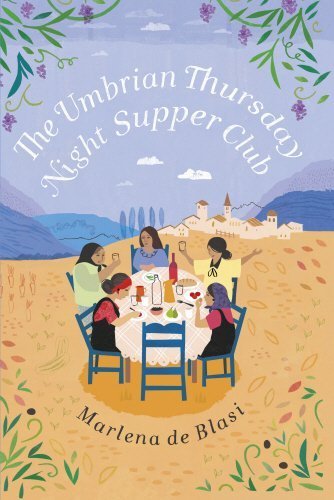|
|
|
|
| |
Table Talk
|
 |
Festa delle donne & San Giuseppe!
This month, we also celebrate the Festa delle donne and San Giuseppe!
On March 8, women are saluted throughout Italy for their economic, political and social achievements on Women's Day. The holiday began as a day of memory and protest following the devastating and tragic event in New York in 1908 when so many female factory workers lost their lives. The women had gone on strike to protest the substandard conditions and low pay under which they were forced to work when the owner of the factory blocked all of the exits and set the building on fire. All 129 female factory workers were trapped inside, for the most part all Italian immigrants. Today, everyone in Italy celebrates Women's Day on March 8 giving gifts of mimosa and pastries to women of all ages.
On March 19, Italians celebrate San Giuseppe, Saint Joseph, with le zeppole di San Giuseppe. But you'll start seeing these small round doughnut-like cream-filled puffs as early as February. And when March arrives, bakeries and caffèsalike cannot keep up baking or frying and selling the sweet pastries.
Food historians say zeppole date back to the late 1700s, maybe earlier, when German writer, Johann Wolfgang von Goethe had written about the dreamy little puffs while visiting Naples. The very first documented recipe for zeppole dates back to 1837, at a time when it was common practice for Neapolitans to deep fry food in barrels of hot oil on the streets of Naples (fried pizza was their favorite) - in effect, the first street food carts. Today, zeppole, continue to be filled with yellow cooked cream, and are both baked and fried and garnished with cream, confectioners' sugar and sometimes a black cherry. They're easy to make and just as delicious to bite, so celebrate San Giuseppe's day, also Fathers' Day in Italy, with the Neapolitan zeppole.
|
Sweet dreams of spring conjure up rolling green hills of Umbria, deep dark extra virgin olive oil, artisan Pecorino and Sagrantino di Montefalco wine. As you travel through Umbria's cities, Perugia, Todi and Assisi, all of which typify the peaceful beauty of this region, experience the differences in cuisine.
Overall Umbrian cuisine is rustic and country style, as locals cook with lots of beans (the small Castelluccio lentils) cereals and legumes. Produce is always seasonal: mushrooms, wild asparagus, fava beans, spring onions, autumn cabbage and sweet autumn pumpkins. Antipasto is usually crostini al tartufo, crostini al fegato and always a big platter of dry salami, fennel sausage, prosciutto and Umbrian Pecorino. The town of Norcia, famous throughout the world for the production of truffles, not only is known for Pecorino but for ricotta salata, as well as the caciotta with truffles. There's the treasured soft cheese, Ravaggiolo Umbro, which is produced in the first six months of the year and placed at atop fern leaves for natural flavor.
When recipes have been passed down through the generations and interpretations and measurements taken by eye, it's challenging to document recipes with ancient origins. But, one thing is for sure, fresh rustic Umbrian pasta is made fresh and by hand and, the beauty of it is that each piece is made differently.
Pastas are plenty serving up spaghetti con il tartufo, pasta and truffles; pappardelle alla lepre wide noddle pasta with wild rabbit ragout, bacon and cloves; ciriole alla ternana (a pasta made with only water and flour) served with a garlic, oil and chili pepper; strangozzi, stringozzi, strozzapreti, bringoli, umbricelli, bigoli, lombrichelli, ciriole, anguillette, and manfricoli with sauces to properly match. And of course, there is always polenta e fagioli, corn meal with beans or corn meal with red sauces and stewed meats. Meat includes: roasted porchetta with wild mushrooms, roasted lamb with wild rosemary, gallina ubriaca (literally, drunken chicken cooked in homemade Orvieto wine and, always with big glass of red ruby wine.
Breads are artisan and always regional starting with the caciato, pan nociato, pane di Strettura to the unsalted bread of Terni. Desserts too are home made including: tozzetti (dry biscotti), ciaramicola (a traditional cake made with grapes), struffoli (fried puffs drenched in honey), castagnole (doughnut holes rolled in brown sugar), and frappe (flash-fried paper-thin ribbons) and chocolate - don't forget Perugia is home to Italy's finest.
When you return to your home kitchen you'll be showing off your newly learned cooking skills to family and friends impressing the crowds like a vero Italiano.
A Note On Umbria
Visiting Umbria brings you to clusters of Medieval villages set high on hilltops and known for their historical and artistic heritage. It's steeped in an atmosphere of bygone times - among medieval paths, palaces and castles and fortresses.
Umbria is also home to Lake Trasimeno and its three islands: Islands of Polvese, Maggiore and Minore, and two promontories. Often called the green heart, Umbria is a region rich in wine and olive oil making, also known for black and white truffles. One of the most interesting and important things to see is the Franciscan Path of Peace which connects Assisi to Gubbio- a route that was walked many times by Saint Francis after 1206 when he renounced his father's properties. It's a short walk but offers a unique way to experience nature, prayer and friendship.
|
Spring In Umbria
New - Perugia Cooking & Spa™
|
Happy Cookers At Cooking Vacations
|
|
Recipes From Our Kitchen
|
 |
|
Primo
Pasta con Le Fave - Pasta with Fava Beans

|
Made from 100% Grechetto grapes and golden yellow in color, this white wine offers up soft citrus blossom and a little nectarine with some peach and almond. It is rich and full bodied but with a freshness that makes this a good match for an early spring pasta dish.
|
|
Secondo
Vitello di Umbria - Umbrian Veal

|
Brilliant ruby with garnet highlights, this Montefalco gives up notes of spices, cocoa, blackberry and cherry with a herbal finish that accompanies the herbs in the Umbrian veal very well. Well structured, and well balanced there is good persistency on the finish.
|
|
Dolce
Torta di Vino Sagrantino - Sagrantino Wine Cake

|
Nothing could be a better match for this wine cake than its sweet wine counterpart. This elegant Tabarrini Passito is obtained by leaving the Sagrantino grapes to mature on racks for three months before vinification to concentrate the sugars. The wine is then matured for three years in French oak barrels. There are wonderful aromas of jam, sweet and Oriental spices, dried fruit and mint and the final result is an intense, concentrated rounded wine rich in tannins.
|
|

|
With Love From Italy
|
|
|
Perugia - The Capital of Sweetness
Perugia is not only the Capital of Umbria, it's also home to Italy's most famous chocolate maker, Perugina and, the most famous chocolate festival, EuroChocolate, (held every year in October). Perugina, dating back to 1922, is the maker of the famous Baci: the foil wrapped chocolate drop with a hazelnut center that's wrapped with a love note. To purchase these little chocolate bites, go to
https://www.baciperugina.com/us/en/
|
Sip & Swirl - For the Sommelier in All of Us
The perfect fix when you are missing Italy and Italian precious wines: the-one and-only Negozio del Vino. This online wine shop has excellent and hard to find vintages from artisan makers including: Conte della Vipersa, Rosso Montefalco and Sagrantino. You can mix and match single bottles or indulge in the 6 Vini Umbria option or go for the organic magnum that will have the sommelier in you swirling and sipping like a pro!
|
Artisan honey - with lemon, raspberry, peach, and even coffee - dried nuts and fruit and mead are just a few of the delicious confections made by Casa Perina. Set in the heartland of Orvieto, this family produces handcrafted sweets naturally made. A great ingredient addition to sweeten any recipe.
|
|
|
|
Italy On A Plate
Flavors Of The Season
By Germaine Stafford
|
We continue our roundup of what's happening in the culinary world in Italy and give you our chef of the month, book recommendation, and a list of seasonal foods for March.
What's In Season?
Pork products (salami etc.)
Octopus
Cod
Cuttlefish
Sea Bream
Swiss chard
Radicchio
Parsnips
Artichokes
|
Chicory
Celeriac
Fennel
Apples
Pears
Kiwis
First asparagus
First fava beans (broad beans)
Jerusalem artichokes
|
|
In Umbria's green heart where porchetta and rabbit and truffles reign, Ottavi Mare offers a little bit of sea! Chef Vittoria prepares baccalà with truffles topped with a garlic breadcrumb; handmade pasta with lobster; a fisherman's platter with fresh grilled fish and shellfish and excellent fritto misto di mare, fried fish, on a platter. The wine list is vast, service excellent and desserts a must!
Corso Giovanni Amendola 8,
06031, Bevagna, Italy
+39 0742 361880
|
The Umbrian Thursday Night Supper Club
 |
Every week on a Thursday evening, a group of four Italian rural women gather in a stone house in the hills above Italy's Orvieto. There-along with their friend, Marlena-they cook together, sit down to a beautiful supper, drink their beloved local wines and talk. Surrounded by candlelight, good food and friendship, Miranda, Ninucia, Paolina, and Gilda tell their life stories of loves lost and found, of ageing and abandonment, of mafia grudges and family feuds, and of cherished ingredients and recipes whose secrets have been passed down through generations. The women are drawn together over food and wine and their friendships grow over mouthwatering Umbrian recipes
.
|
|
|
|

USA: 20 Park Plaza, #400, Boston, MA 02116, USA
T: 617.247.4112 | 1.800.916.1152
Italy: +39.339.604.29.33
Lauren is always cooking & writing from Positano, Italy,
while welcoming cooking guests from around the world.
© 2000-2018
|
|
|
|
|
| |
|
|